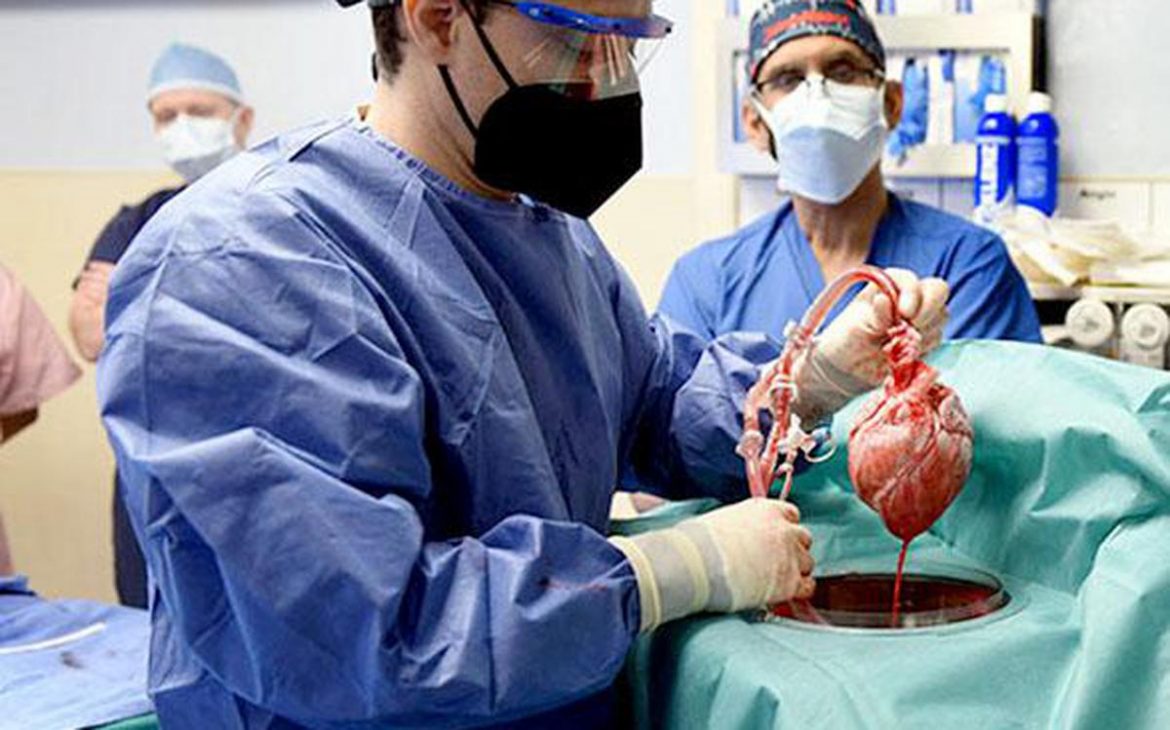New York scientists relocated pig hearts into two mind-dead individuals throughout the past month, the most recent in a series of improvements in the long mission to one day save human lives with creature organs.
The investigations declared Tuesday come after a noteworthy yet bombed endeavor recently to utilize a pig’s heart to save a perishing Maryland mankind of practice before researchers attempt once more with the living.
Among the illustrations: Practice with the departed is significant.
“We advanced such a huge amount from the first that the subsequent one is vastly improved,” said Dr. Nader Moazami, who drove the activities at NYU Langone Health. “You stand there in wonderment” when the pig heart begins to pulsate in a human body.
This time around, Moazami’s group mirrored the way that heart transfers regularly are finished. When last month and when last week, scientists ventured out to an office lodging hereditarily changed pigs, eliminated the required hearts, set them aside momentarily, and flew them many miles back to New York.
They utilized extraordinary new strategies to check for any troubling creature infections prior to sewing the heart into the chest of each expired beneficiary — a Vietnam veteran from Pennsylvania with a long history of coronary illness and a New York lady who’d profited from a transfer prior throughout everyday life.
Then, at that point, came three days of more serious testing than living patients could endure — including regular biopsies of the organ — before specialists detached life support.
Currently, the Food and Drug Administration is thinking about whether to permit a few Americans who need another organ to chip in for thorough investigations of either pig hearts or kidneys. NYU Langone is among three transfer places arranging preliminaries — and has a gathering arranged with the FDA in August to examine necessities.
Testing in the departed could help tweak how the principal preliminaries in the living are planned, said Dr. David Klassen of the United Network for Organ Sharing, which regulates the country’s transfer framework.
“They act as a significant kind of venturing stone,” said Klassen, who contemplates whether specialists next should seriously mull over following the organs for a week or so in a given body as opposed to only three days.
Creature-to-human transfers, what researchers call xenotransplantation, have been gone after for a really long time without progress, as individuals’ safe frameworks in a split second gone after the unfamiliar tissue. Presently pigs are hereditarily changed so their organs are more humanlike — expanding trust that they could one day assist with filling a lack of given organs. In excess of 100,000 individuals are on the public sitting tight rundown for a transfer, the greater part of the kidney patients, and thousands pass on each year prior to their turn comes.
The most aggressive endeavor so far came in January, when specialists at the University of Maryland Medical Center relocated a pig heart into a perishing 57-year-old. David Bennett made due for a considerable length of time, proof that xenotransplantation was basically conceivable. However, starting testing missed that the organ held onto a creature infection. What made Bennett’s new heart fall flat and whether that infection assumed any part actually isn’t known, the Maryland scientists as of late announced in the New England Journal of Medicine.
Months sooner, the NYU group and specialists at the University of Alabama at Birmingham independently were trying pig kidney transfers in the departed, individuals who’d given their bodies for science.
NYU’s new heart trials will add to the proof as the FDA chooses whether to permit formal examinations in living patients.
Be that as it may, NYU Langone’s Dr. Robert Montgomery, a kidney relocate specialist who accepted his own heart relocation, said proceeding with cautious examinations in the departed is basic to sorting out the best techniques “in a setting where an individual’s life isn’t in question.”
“This is certainly not a limited time offer circumstance. This will be long stretches of realizing what’s significant and what’s not significant for everything to fall into place,” said Montgomery, who has a rundown of very nearly 50 individuals who’ve called frantic to chip in for a pig kidney relocate.
The FDA hasn’t flagged how soon it could choose whether to permit such investigations. At a new two-day public gathering, the organization’s logical counsels said the time had come to attempt regardless of an extensive rundown of inquiries. They incorporate how best to adjust the pigs, as a few biotech organizations — including Revivicor, which provided the NYU organs — are chasing after various choices.
It’s not even clear which organ to endeavor first in a clinical preliminary. In the event that a pig kidney falls flat, the patient can constantly make due on dialysis. However, a portion of the FDA’s counselors expressed that beginning with the heart may be better. Explores different avenues regarding pig kidneys in perished people showed the organs delivered pee. Yet obscure is whether pig kidneys do another significant work — handling drugs — the same way human kidneys do.



